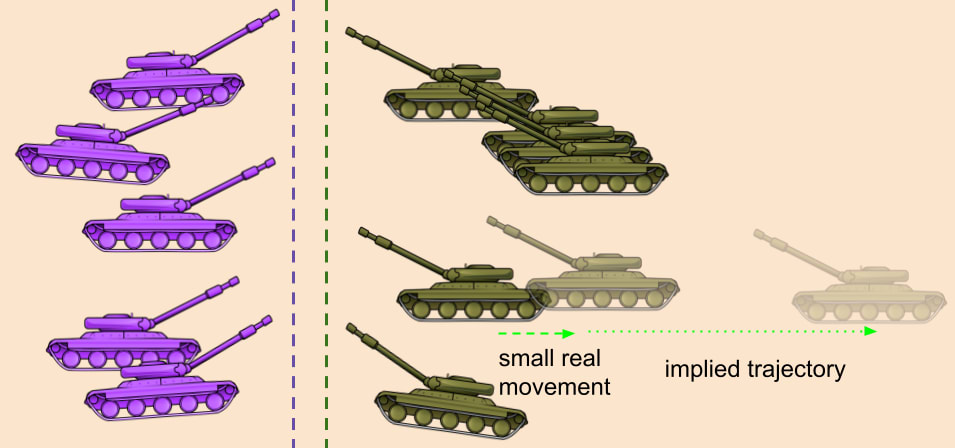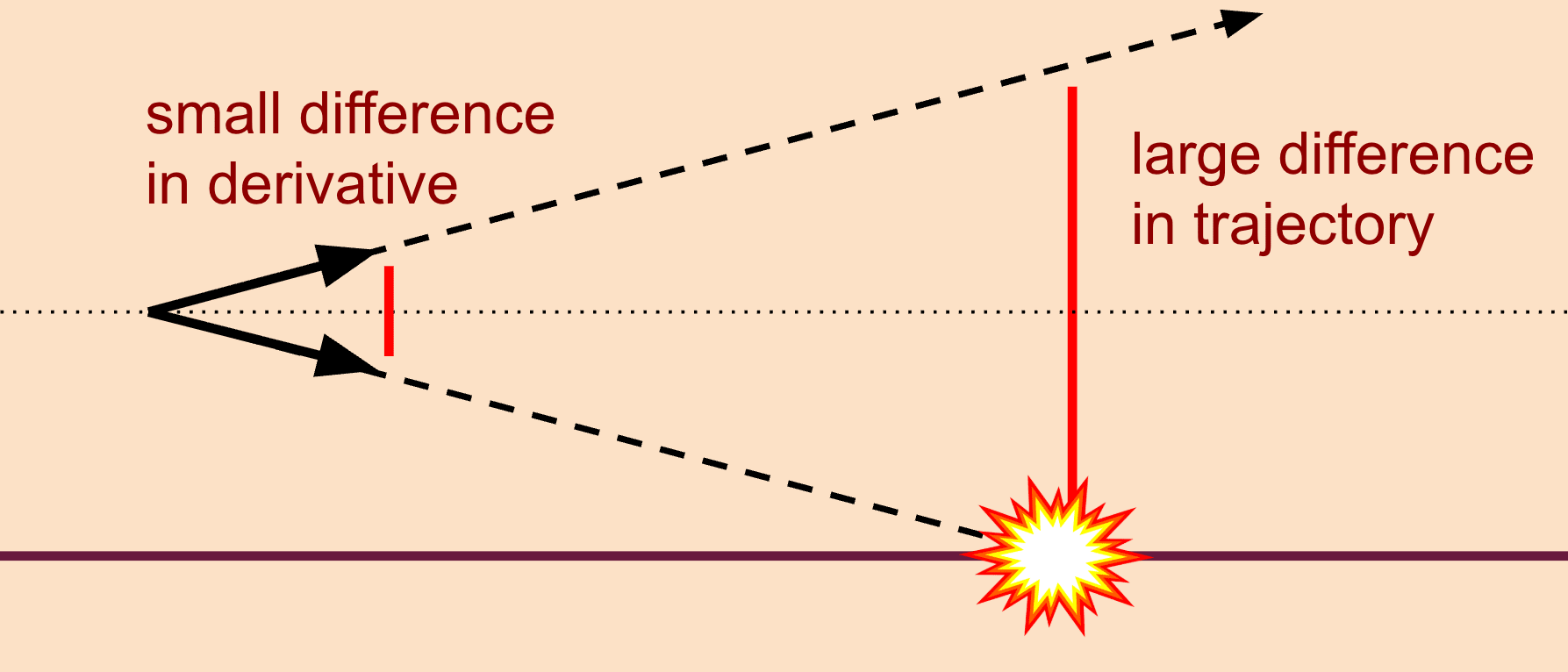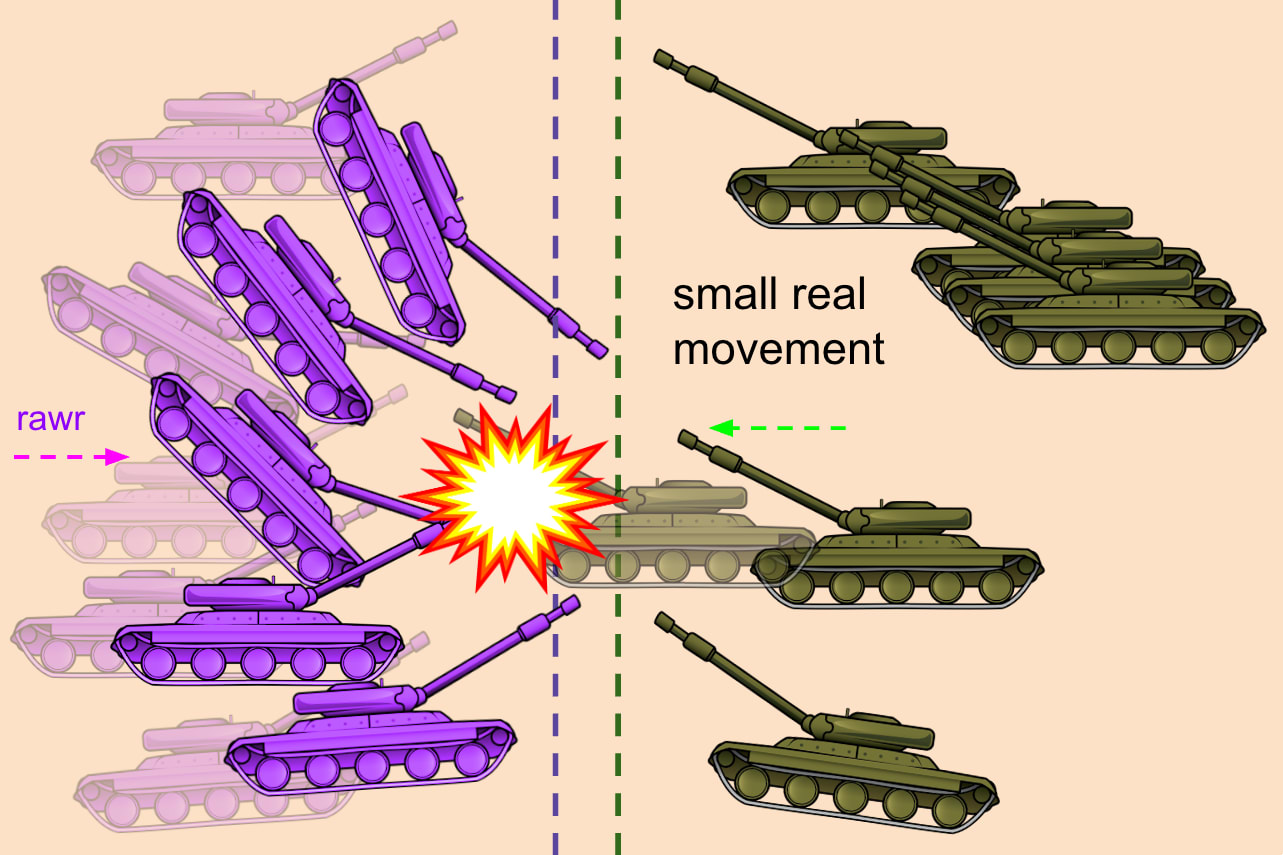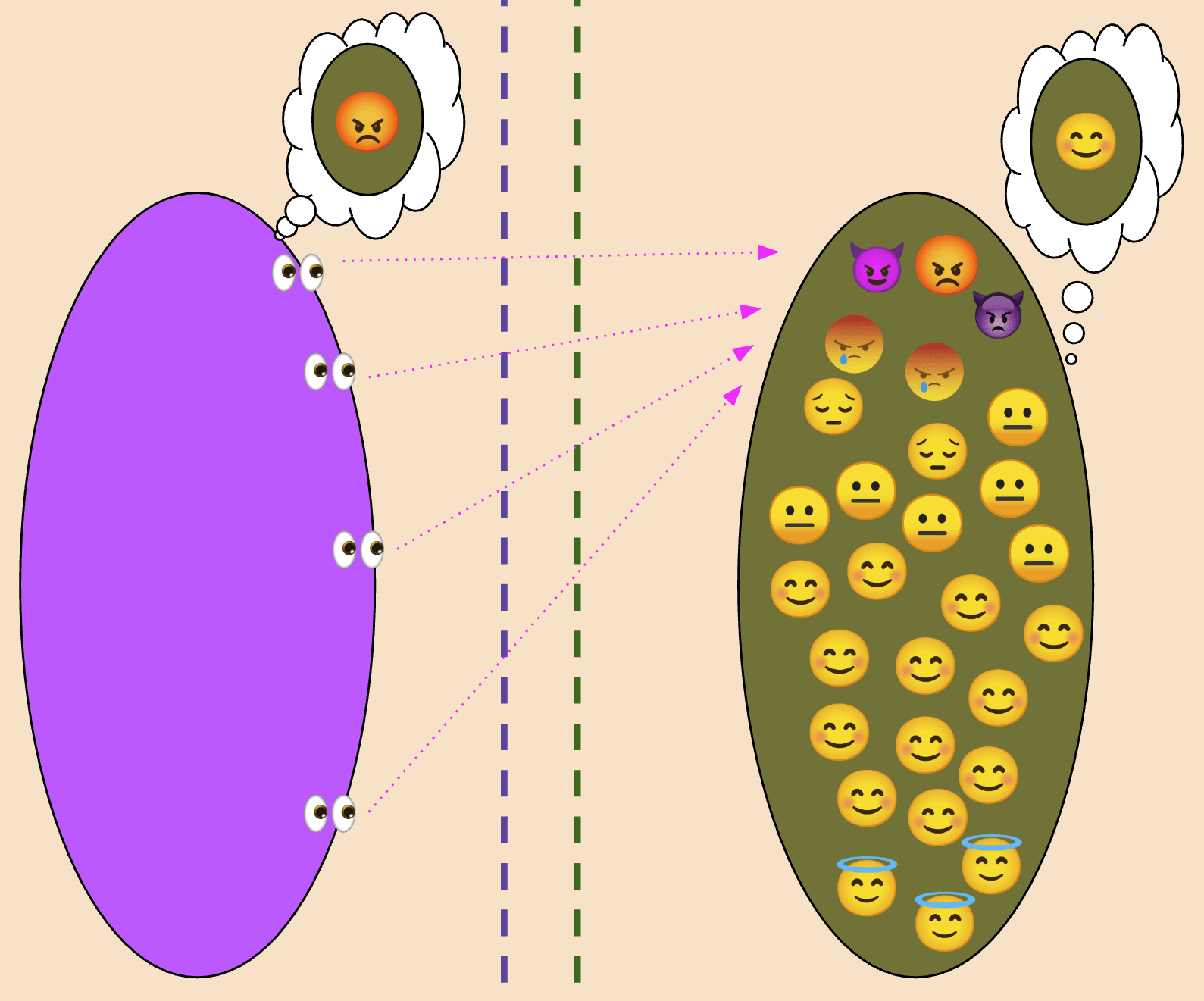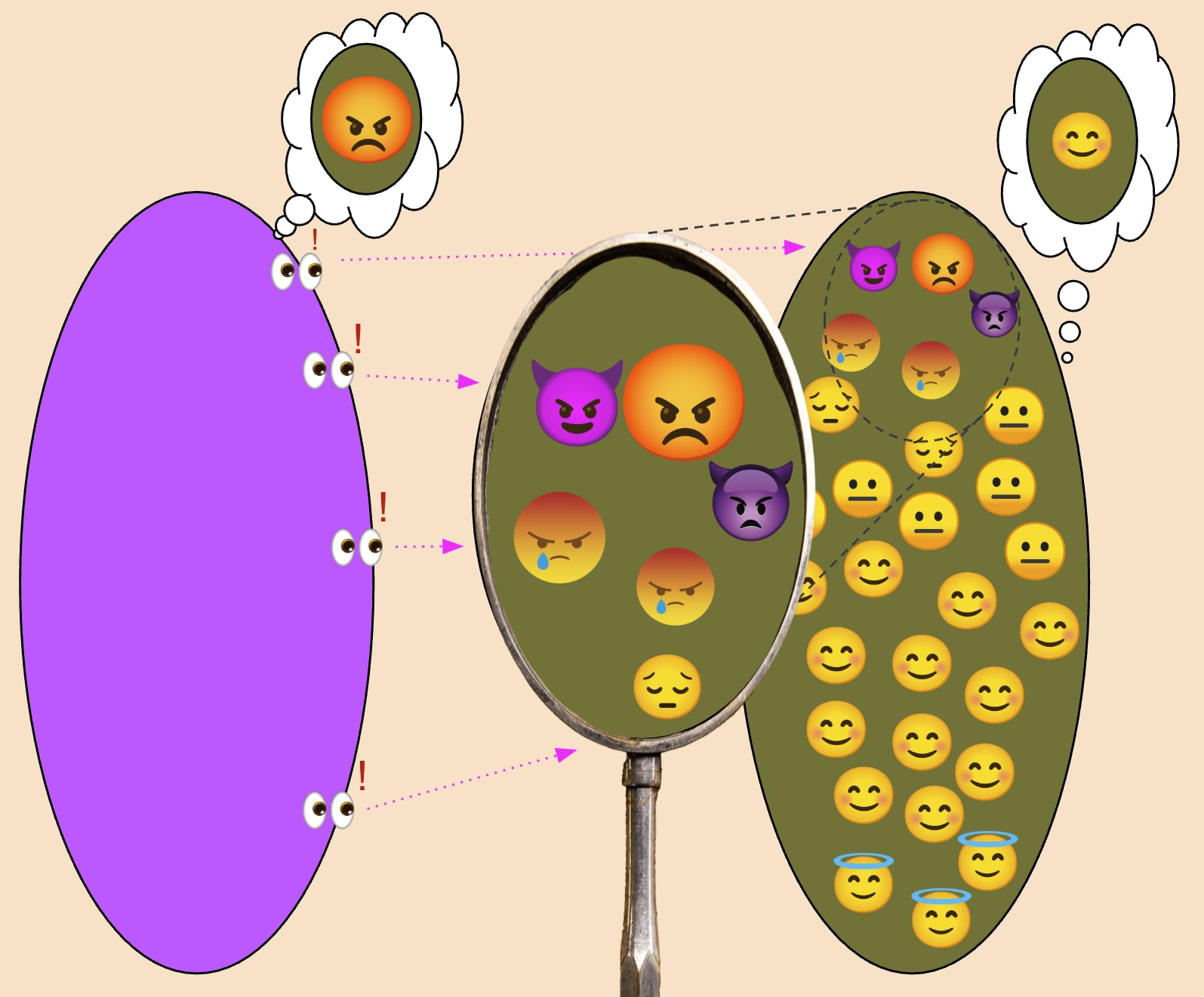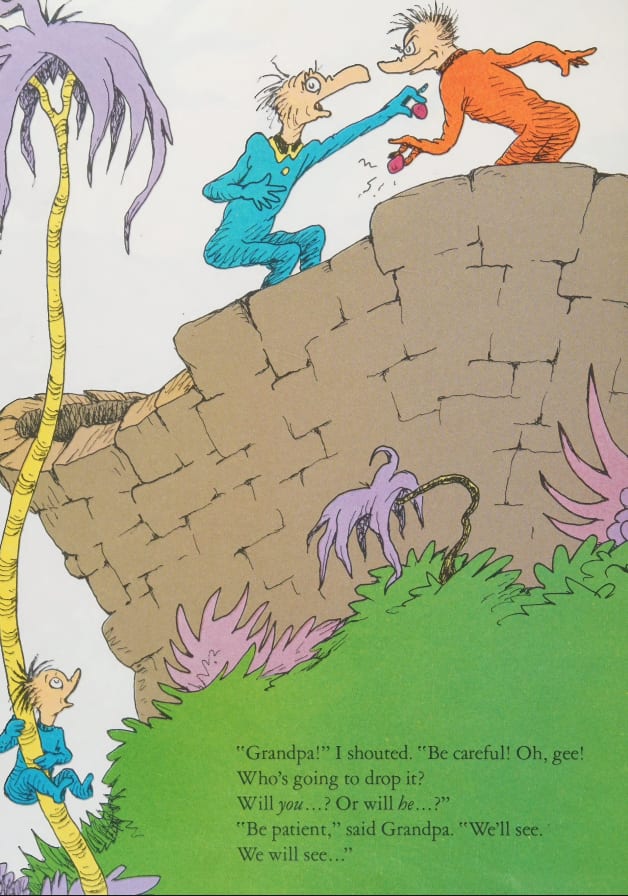Published on November 8, 2025 8:12 AM GMT
Introduction
Conflict pervades the world. Conflict can come from mere mistkes, but many conflicts are not mere mistakes. We don't understand conflict. We doubly don't understand conflict because some conflicts masquerade as mistakes, and we wish that they were mere mistakes, so we are happy to buy in to that masquerade. This is a mistake on our part, haha. We should study conflict until we understand it.
This essay makes some attempt to sketch a few aspects of conflict—in large part as a hopeful gesture toward the possibility of understanding other aspects.
Synopsis
- In a brewing c...
Published on November 8, 2025 8:12 AM GMT
Introduction
Conflict pervades the world. Conflict can come from mere mistkes, but many conflicts are not mere mistakes. We don't understand conflict. We doubly don't understand conflict because some conflicts masquerade as mistakes, and we wish that they were mere mistakes, so we are happy to buy in to that masquerade. This is a mistake on our part, haha. We should study conflict until we understand it.
This essay makes some attempt to sketch a few aspects of conflict—in large part as a hopeful gesture toward the possibility of understanding other aspects.
Synopsis
- In a brewing conflict, inclinations toward escalation and deescalation are sensitive to derivatives, i.e. small changes in what the other side is doing.
- Since the sides react to their mere perceptions by taking real action, escalation is also sensitive to mere perception.
- There's usually plenty of fuel available for perception of escalation—it's easy to find things about the other side to worry about.
- There's many ways that a side's perception can get distorted in a way that makes them mistakenly interpret the other side as escalating.
- This gives cover of plausible deniability for conflictual stances to escalate while pretending to be merely mistaken.
Escalation is sensitive to derivatives
The Purples and Greens have reached the boiling point and are about to go to war. There has not yet been an incursion, but their forces are arrayed along the border, prepared for action on the time scale of minutes. With tensions overflowing, anything could set off kinetic warfare.
Pearl, leader of the Purples, wants to avoid exchanging shells, which is a very negative-sum type of exchange. But she also will not unilaterally retreat Purple forces from the border, allowing the Greens—if they have unilateral hostile intent—to gain a first-mover advantage. Preliminary deescalation talks with Grant, the Green commander, have been promising, but his true intentions are obscured by the fog of pre-war.
What does Pearl look to, to suss out how she should react to the situation? Or, a more wise question: What could Grant do, so that if he wants to deescalate all the way back down to peace, Pearl would be able to safely go along with him down that path?
It's a simple question with a simple answer: Grant can start backing off his forces. Pearl can see this, and extrapolate a possible path where Grant's forces continue retreating, defusing the threat gradually but eventually completely.
Neither Grant nor Pearl are willing to greatly defuse their own threat while the other's threat is still live. Each troop movement will have to be small. But that can be sufficient to deescalate:
By choosing small changes that point at a desirable coordinated trajectory, Grant and Pearl can make each next step look like the right step, so together they can follow that trajectory. That's the trick: You can make large coordinated changes by finding a path of small unilateral changes, where each change individually is safe enough to do unilaterally, but makes progress along the larger trajectory. Grant is leveraging the fact that Pearl will extrapolate from Grant's derivative and base her actions on that extrapolation; and vice versa, Pearl relies on Grant extrapolating.
But since the trajectory is being based on the derivative, the trajectory is very sensitive to the derivative. A small absolute difference in the derivative leads to a large difference of trajectory:
If Grant's forces make a small movement forward, Pearl may respond in kind, and we're going to war.
Escalation is sensitive to perceived derivatives
Suppose Pearl mistakenly thinks that Grant has advanced one of his tanks toward the border. This seems to Pearl like an escalation. So she responds by advancing one of her tanks. So, to recap, Grant did not advance his tanks, and then Pearl advanced her tank.
Even if Pearl exercises caution and advances her tank less than she thought that Grant advanced his tank, still, from Grant's perspective, Pearl advanced her tank out of the blue. Grant would then actually advance his own tanks. The mere perception of tank advancement led to the actuality of tank advancement.
He might even advance his tanks more than Pearl did, which could be justified from his perspective: As far as he knows Pearl escalated without provocation, and it might be appropriate to give no quarter to that behavior. And then from Pearl's perspective, Grant has further escalated even in the face of her attempt to deescalate by responding relatively softly. So Pearl escalates further.
Thus a perceived escalation quickly promotes itself into an actual escalation. (Cf. "generous tit-for-tat" strategies, which do better than tit-for-tat when players have trembling hands.)
There is plenty of fuel to perceive escalation
The simple point of this section can be summed up in one image:
There's always something you can see in the other side, that makes you think they're escalating, or preparing to escalate, or plotting long-term to escalate. This gets more and more true, as the other side gets bigger, more complex, less homogeneous, and less self-regulated.
(One or both sides may have alarming features that result from actual aggression or escalation, to the same or different degrees; May we not pretend symmetry where there is none.)
Elaboration:
Consider the classic iterated prisoner's dilemma. This is a very clean and neat interaction between two agents. There's a single channel, with a predefined action space, where the actions have predefined consequences. In that context, it can be straightforward enough to understand what will happen when two strategies play the game. And, it can therefore sometimes be feasible to design strategies to do well. We can tell that Tit-for-Tat is better than CooperateBot because we can see analytically that it does better against DefectBot; and we can see that Generous Tit-for-Tat does better (at least against TFT and Generous TFT) than pure Tit-for-Tat when players have trembling hands.
Similarly, if Pearl and Grant are only interacting through tank movements on the Purple-Green border, they are in a fairly constrained setting with fairly clear perceptions, derivatives, trajectories, and pathways to conflict or deescalation. Are we moving our tanks toward the border or away from the border? That's all.
Real life is not like that. Real-life entities relate to each other anastomotically:
Different aspects of the two entities will exert influence on each other through a heterogeneous variety of channels. If you have a banana, you can
- look at it,
- feel it with your fingers,
- smell it,
- genetically sequence it,
- run it through a mass spectrometer,
- listen to it (ultrasound it),
- digest it,
- trace its individual history or evolutionary history,
- mathematically analyze its shape,
- throw it at someone,
- plant it,
- and so on and so on.
Now imagine how many different channels of influence can exist between two humans, or between collectives of humans. They are as varied as the whole range of human endeavors.
If you're in a conflict, you have to consider the full range of possible channels of influence from the enemy. Some quotes (brought to my attention by a gippity):
- WWI French Prime Minister George Clemenceau: "Generals always prepare to fight the last war, especially if they won it." (The enemy will update their tactics to new channels that you aren't prepared for.)
- Secretary of Defense James Mattis: "The enemy gets a vote." (Your plan might sound nice, but the enemy is doing a min-max search against ways to disrupt it.)
- Mike Tyson: "Everyone has a plan until they get punched in the mouth."
As you consider the many channels by which the enemy might approach, you thus have many opportunities to perceive attacks, real or not. Some ways that there can be lots of surface area for perceived escalation:
-
In a conflict between large groups, each group includes many people, each of which is a potential channel for escalation.
- Example: If anyone in the US commits physical violence, they might potentially be investigated for their political leanings. Then the corresponding political party might have hostile intent ascribed to them as a whole.
-
Groups are heterogeneous, so there are many people with various behavioral stances, including fringe (or not so fringe) people with truly hostile behavioral stances.
- Example: The great majority of people in the great majority of groups will not send death threats to other people. But some will.
-
Events can be overgeneralized out of their specific context. You could interpret a small local conflict as being just that—small and local, not strongly related to a larger conflict. Or, you could interpret it as part of a larger conflict. In that way, conflicts merge like the Blob into super-conflicts.
- Example: If there's an act of violence with apparent racial animus, this can get interpreted as a move in a national/global race war, regardless of whether the actual main reason for that that conflict was a local one, specific to those people. Since there are many local specific conflicts, by chance any large grougs will have members involved in local conflicts with members of the other large group; such conflicts can be referred back to the conflict between larger groups.
-
People like to talk. Since people say a lot, there's a lot of material to select from.
- E.g. you can take someone's comments out of context to mislead others about what ze was saying.
- E.g. you can gather someone's statements against X together into a video montage, and leave out all zer statements in favor of X, falsely making zer appear very against X.
- E.g. if there's an event with a lot of uncertainty (e.g. a private negotiation; an attack during war; an event from a long time ago), there will be differing and unclear accounts, made by people with differing biases or reasons to lie.
-
If a conflict has been going on for a long time, past people, events, and statements are all on the table.
- Example: You can find statements, from various times and places, made by both Jews and Arabs living in the Holy Land indicating hostile intent towards the other group. There's plenty of material to portray either group as secretly planning to git rid of the other group. (This doesn't mean it's true or false in either case; you simply can't tell given only that evidence.)
There are plenty of biases to overemphasize escalation
There are a lot of ways that one side's perception gets distorted so that the other side's escalatory actions are overly represented:
(This can happen in one or both directions, to the same or different degrees; May we not pretend symmetry where there is none.)
Some reasons this can happen:
-
Confirmation bias.
-
Hostility is salient.
- "Ain't broke, don't notice" / "the squeaky wheel gets the grease". You don't notice the people not causing trouble; you do notice the people causing trouble.
- If someone who you don't know goes to the trouble of contacting you at all, they have some substantial reason. So they are selected for being enraged, because rage is one motivator (among others) that is strong enough to get them to send you a message.
-
Simply being in conflict-mode makes you on the lookout for escalation.
- In general we perceive what we look for; if you're trying to count the basketball passes, you're less likely to see the gorilla.
- Can you recall a few recent instances where someone with a political position opposed to yours did something that violates a norm or seems hostile to you? Now, can you recall a recent instances where such a person upheld a norm, or did something that indicated a real desire for constructive peace? (Well, maybe the other side really is mostly norm-breaking, mostly hostile, etc.)
-
Attempts to talk you down look like hostile action.
- If someone wants to make peace with you, they might naturally want to convince you that their side's actions don't indicate an overall intent to escalate. But it's easy to interpret that as a longer-term ploy: disarm you, lull you, so they can strike devastatingly later.
- When you push back on their professions of peace, the other side might get uncomfortable, even if they really do want peace, because you're pushing back on the shared narrative of "We, both of our sides, are heading towards peace.". If they are uncomfortable, you can see they are uncomfortable, which looks suspicious. And they might in fact start or increase manipulative actions in order to talk you down; their manipulation is then reasonable for you to interpret as stemming from fundamental hostility.
- Cf. https://www.lesswrong.com/posts/n299hFwqBxqwJfZyN/adele-lopez-s-shortform?commentId=zWyC9mDQ9FTxKEqnT. the devil comes with his tricks
- From 2 Corinthians 11:14-15: "[...]Satan himself masquerades as an angel of light. It is not surprising, then, if his servants also masquerade as servants of righteousness. [...]"
-
You might not track how you are inducing hostility, causing you to misunderstand increases in hostility.
- You might perceive some escalation. Then you are a bit more on edge, on the lookout. That stance is slightly ambiguously hostile. You interact with other people from the other side; they react to your slight hostility with slight hostility. They are mostly not hostile, but you are seeing them at their most hostile, because you're inducing it. You misunderstand. You think they are always like that. And you think that they are getting more hostile suddenly, all at once.
- Cf. Nick Fuentes, maybe.
-
Filter bubbles.
-
Grifting; incentives for attention-grabbing.
- You can get attention and maybe money by getting engagement.
- Hostility, real or apparent, from the other side is very salient to people. E.g. enragement gives engagement, and apparent escalation by the other side can be enraging.
-
Third parties who want to cause escalation can create false-flags, and also just draw more attention to hostility indicators.
-
Some elements on either side might want escalation, and therefore might amplify perceptions of hostility in the opposite side.
- The broadcasters on your side might choose to amplify the images of hostility from the other side.
- The other side's most hostile elements might want to appear aggressive, and therefore might amplify their own image.
- E.g. they might want to provoke a reaction from your side, in order to then provoke a reaction in their own side towards being more united and more hostile.
- E.g. they might just want to cause outright conflict.
-
Some elements might want to dogwhistle in favor of escalation, by performatively drawing attention to hostile-seeming elements of the other side.
-
Your side has broadcasters. Those broadcasters control your side's perception of the other side. Those broadcasters might also have perception that's biased toward seeing hostility, by virtue of being broadcasters.
- The worst of the other side seeks out your broadcasters. In other words, public figures act as lightning rods (a kind of magnifying glass for voltage differentials in clouds, haha) for hostility; and then they broadcast that experience.
- E.g. Matt Walsh (a right-wing US political commentator) says that he receives many death threats from left-wingers. Most right-wing people don't receive any death threats, but he is very salient, as a public commentator; so left-wing attention is focused on him. He concludes that the left-wing is half-crazed, or something. Then he broadcasts this conclusion to the right-wing.
-
There is a kind of unilateralist's curse for perception of hostility. On the Purple side, there will be a distribution of perception biases; some Purples will be more biased away from seeing hostility in the Greens, some more biased towards seeing hostility. For the Purples most biased towards seeing hostility, they'll feel justified in some degree of escalation themselves. Then Greens will see actual escalation from the Purples.
Fake mistaken perception
To review: There is plenty of fuel on the Green side for Purple to perceive escalation from Green. And, there are many plausible reasons for that Purple would be biased to perceive Green escalation more than it is really there. So, it's likely that the Purples have a lot of distorted perception about the Greens, and in fact sometimes mistakenly overreact.
But furthermore, a Purple therefore can always falsely but plausibly act as though ze is mistakenly perceiving escalation by Greens. Ze has plenty of talking points to fall back on—not necessarily to convince the listener of the claims about Greens, but rather to be convincing enough to the listener that ze is just confused or mistaken, as a kind of higher-level concern troll.
A regular concern troll would be a Purple pretending to be a Green. Ze would say ze's concerned about something the Greens are doing, like, "If we want to be good Greens, shouldn't we do XYZ instead of what we're doing?", where XYZ is not a good idea communicated clearly. The goal might be to nudge the Greens in ineffective directions; sow doubt and underconfidence and non-coordination among the Greens; waste the time and energy of Green leaders; and humiliate Green leaders by making them dance to a stupid tune.
A higher-level concern troll is a Purple pretending to be a Purple. Or rather, a Purple who wants more conflict pretending to be a Purple who is increasing conflict due to a mistaken perception about Greens. The goal is the same as the regular concern troll, but in this case the target coalition isn't the Greens, but rather the people who are trying to engage in mistake-theoretic cooperation.
So, you have a Purple who wants escalation, pretending to just be mistaken about Greens. This Purple can troll the Green mistake-theorists: They want to believe it's a mistake, so they spend energy trying to correct the supposed mere mistake. This Purple can also troll the Purple mistake-theorists in the same way: Those Purples waste time trying to correct the fake mistake.
And, of course, more simply, this Purple fake-mistake can maintain plausible deniability while actually misleading some Purple mistake-theorists into thinking that Greens are escalating more than they actually are. Eukaryote points out that those misled Purples are making a mistake.
(Why do mistake theorists not get this? Do they want to believe? Is this a metastatic confusion—wherein, a mistake theorist, seeing a conflict theorist, thinks: "Ah, they are failing to cooperatively correct mistakes, but surely they want to do so, so I just have to correct them both at the object level and at the meta-level, to get them 'back' on track with truth-seeking."?)
There are also other Purple conflict theorists. They'll echo, amplify, support, and refine the Purple fake-mistake perceptions of escalation.
Why do Purples want to escalate
I don't know why this sort of thing happens. Some reasons:
- Some group thinks it can win and dispossess the other group / everyone else. They engage in quorum sensing, escalating as they can.
- Nihilism? Resentment?
- Runaway sides-taking (https://www.sciencedirect.com/science/article/pii/S2352250X15001700), hyperstitions (https://www.lesswrong.com/w/hyperstitions).
- That is, people sense there is some ill-perceived Conflict happening. They may not know what it is, what it's about, who's involved, what's causing it, why it's happening, where it's going, what the plan is, who it's between—they can just tell that there is a conflict. Since there is a conflict, one of the sides will win, and will punish anyone who didn't join that side. They'd better pick a side, otherwise you'll definitely not be part of the winning side, so you'll definitely get punished.
- As an analogy, imagine a mid-upper manager sensing a shakeup in upper management. There are two candidates for who might take power next. You'd better be alignd with at least one, so you have a chance of being in the good graces of the next CEO. So you pick one and align with zer—including helping zer into power. You are an active instigator in the shakeup whose possibility initially caused you to start on this path.
Why doesn't everything explode immediately?
Sometimes it does explode, sometimes it doesn't.
There's also a whole slew of forces keeping things from exploding. People are forgiving; people have many material interests in avoiding conflict (personal danger, danger to standard of living, danger to property, danger to business interests, danger to relationships); people have other things to do than get into conflicts.
There are feedback loops going against conflict. Positive-sum interactions induce more positive-sum interactions and interdependency. Trust engenders trust. People remember conflict's destructiveness and want to avoid it. The longer history goes on, the more people study conflict and understand it bit by bit.
So, in relationships (between factions, countries, people, businesses...) there's a bunch of forces pulling in different directions, in some crazy balance, which sometimes tips one way and sometimes tips the other way.
What to do about it?
IDK. Study more, understand more. Recite the prayer for engaging in conflict.
.לֹא יִשָּׂא גוֹי אֶל גוֹי חֶרֶב לֹא יִלְמְדוּ עוֹד מִלְחָמָה
Discuss
